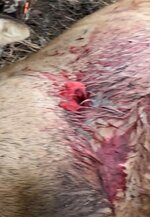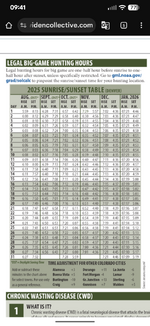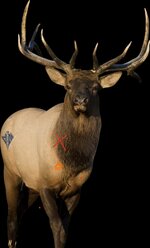Q_Sertorius
WKR
- Joined
- Jun 1, 2024
- Messages
- 2,607
Good on you for being here to ask for advice. It shows you have the right approach. I’ve done something similar on a big whitetail buck where he went down and I wasn’t ready for an immediate follow-up shot. I also had an 800-yard blood trail from a friend’s buck turn into nothing.
The animals aren’t “tough”, but they can have a lot of will to live.
I’ve recovered deer that “should not have gone anywhere” 400 to 800 yards away from the place I shot them. Good shot placement and good bullet performance usually means DRT, but not always.
The best thing you can do is practice more with a rifle you can shoot a lot so you develop justifiable confidence and make the quick, accurate follow-up shot a muscle memory thing. Also turn, the magnification down to where you can stay roughly on target with the recoil.
The animals aren’t “tough”, but they can have a lot of will to live.
I’ve recovered deer that “should not have gone anywhere” 400 to 800 yards away from the place I shot them. Good shot placement and good bullet performance usually means DRT, but not always.
The best thing you can do is practice more with a rifle you can shoot a lot so you develop justifiable confidence and make the quick, accurate follow-up shot a muscle memory thing. Also turn, the magnification down to where you can stay roughly on target with the recoil.



